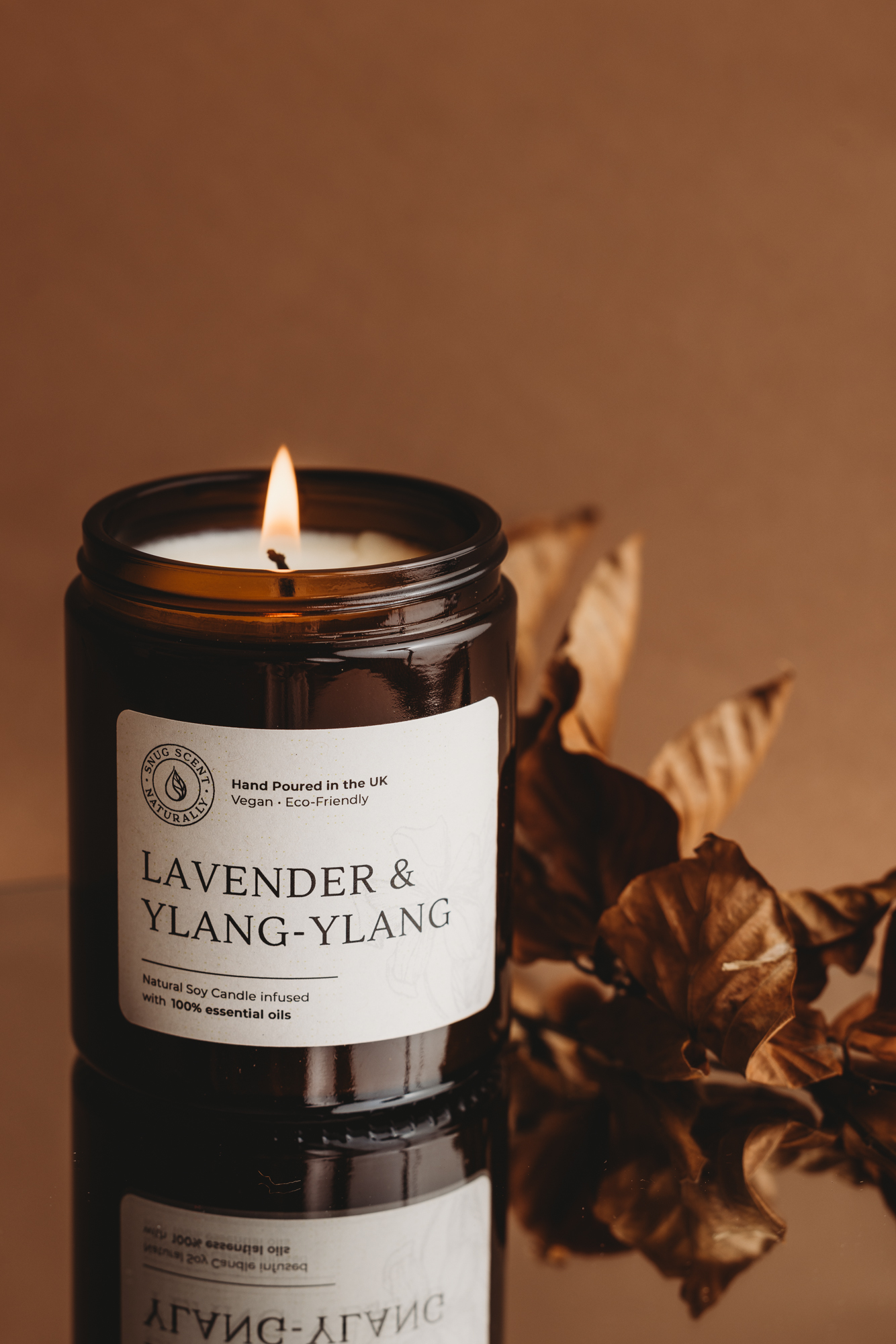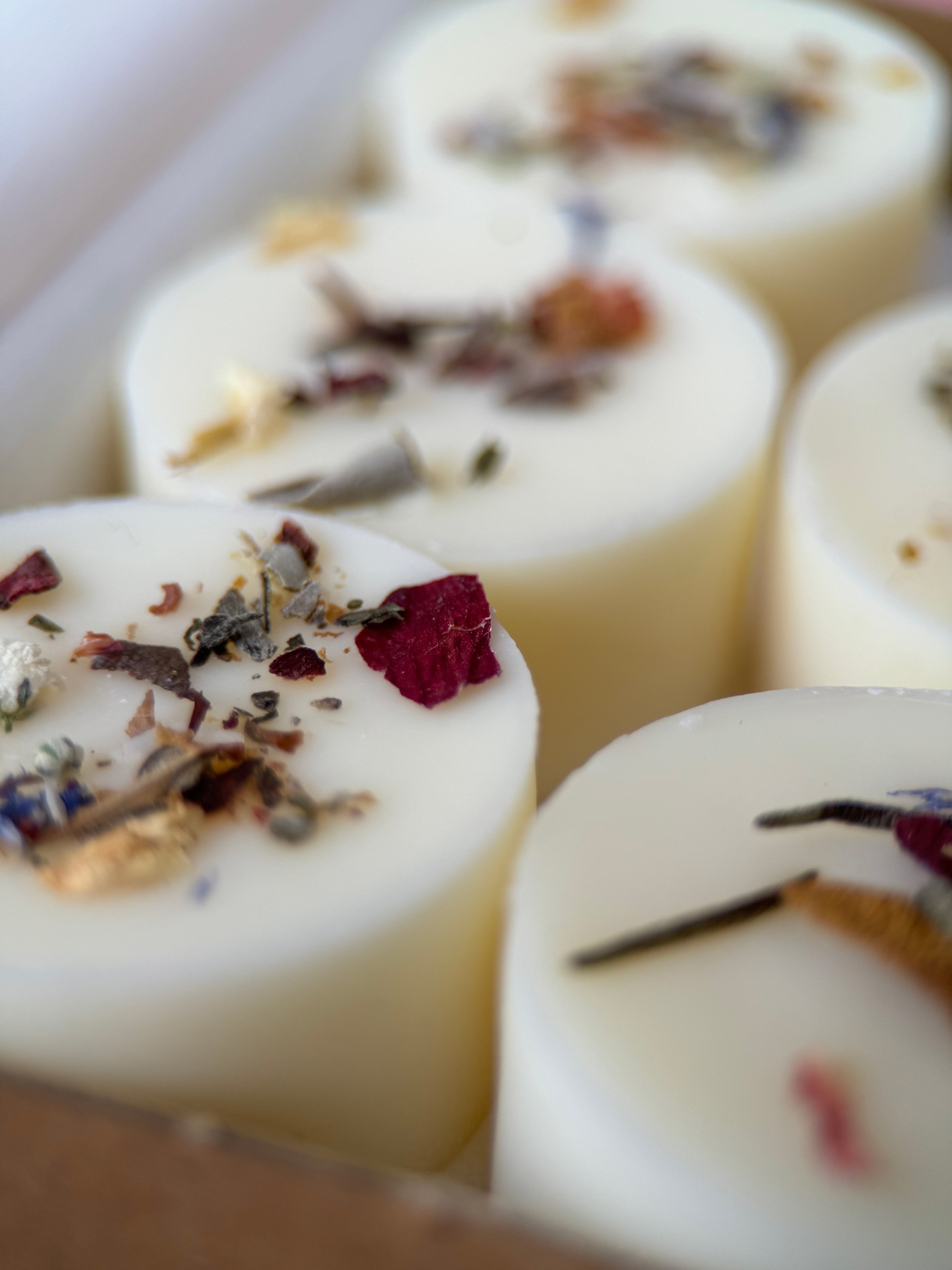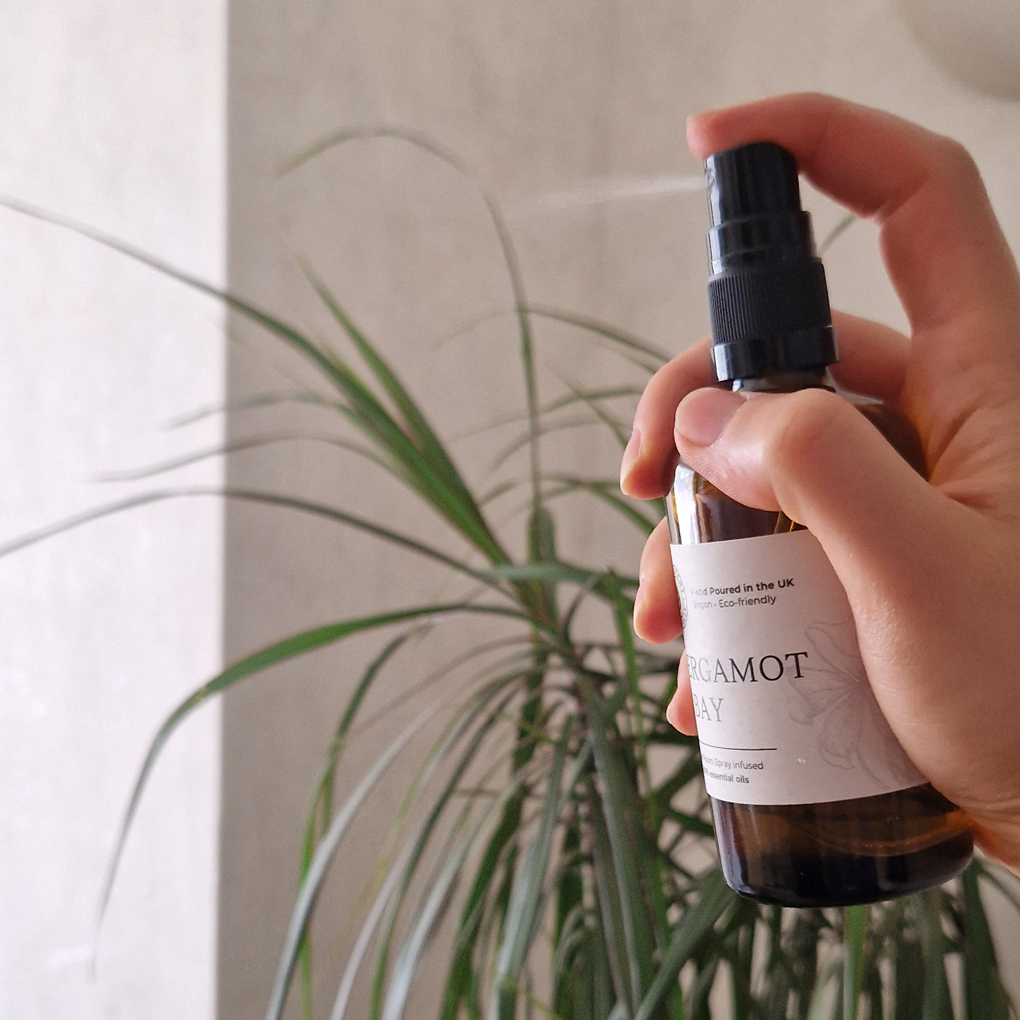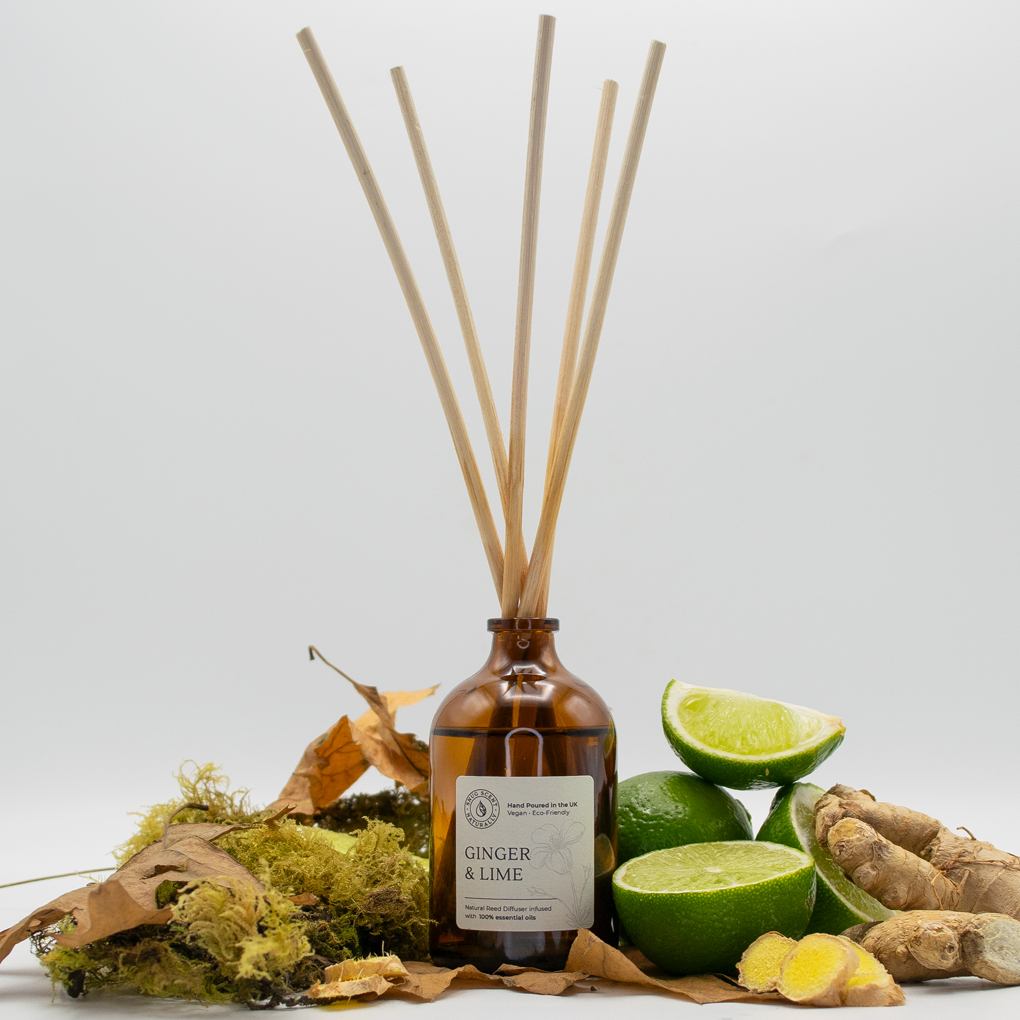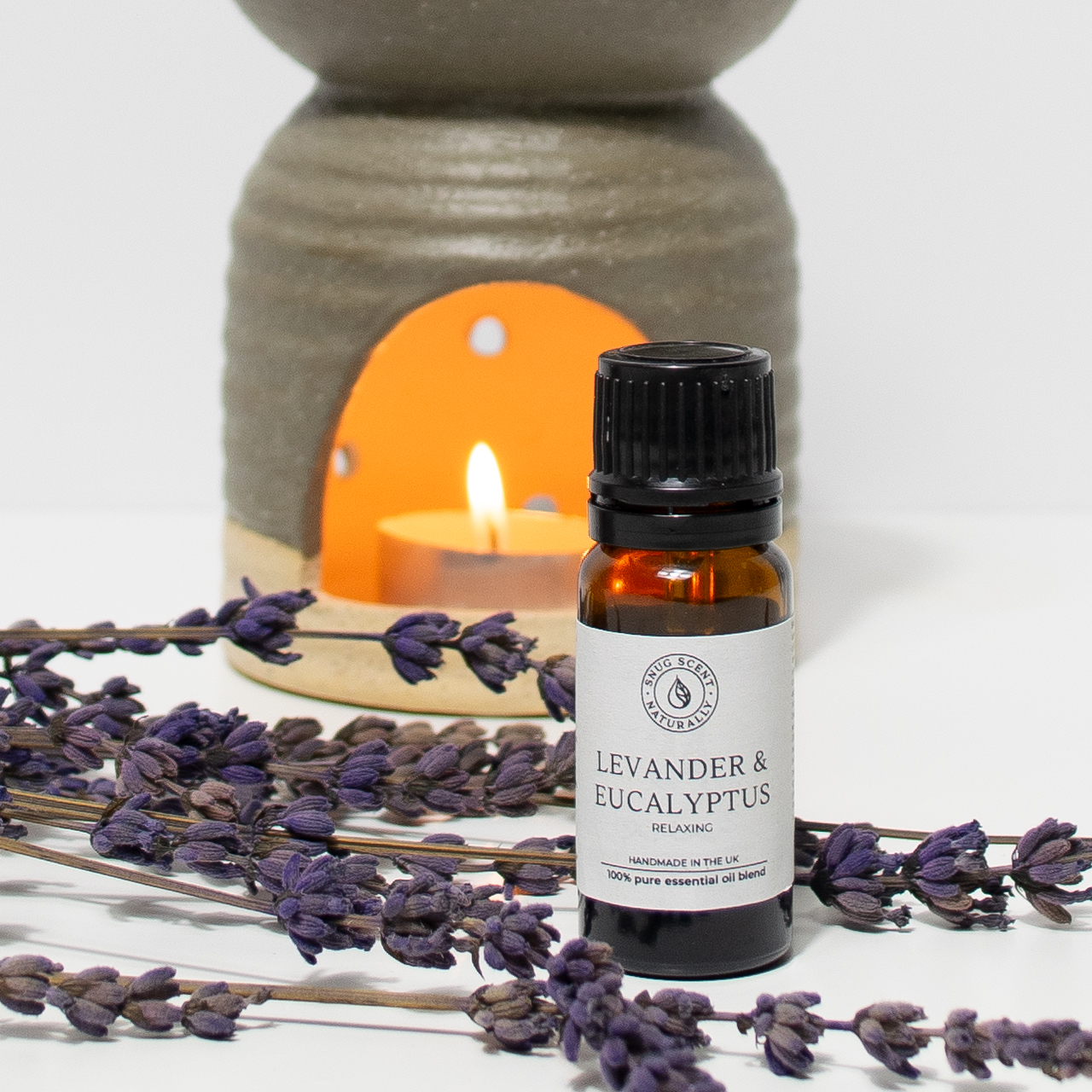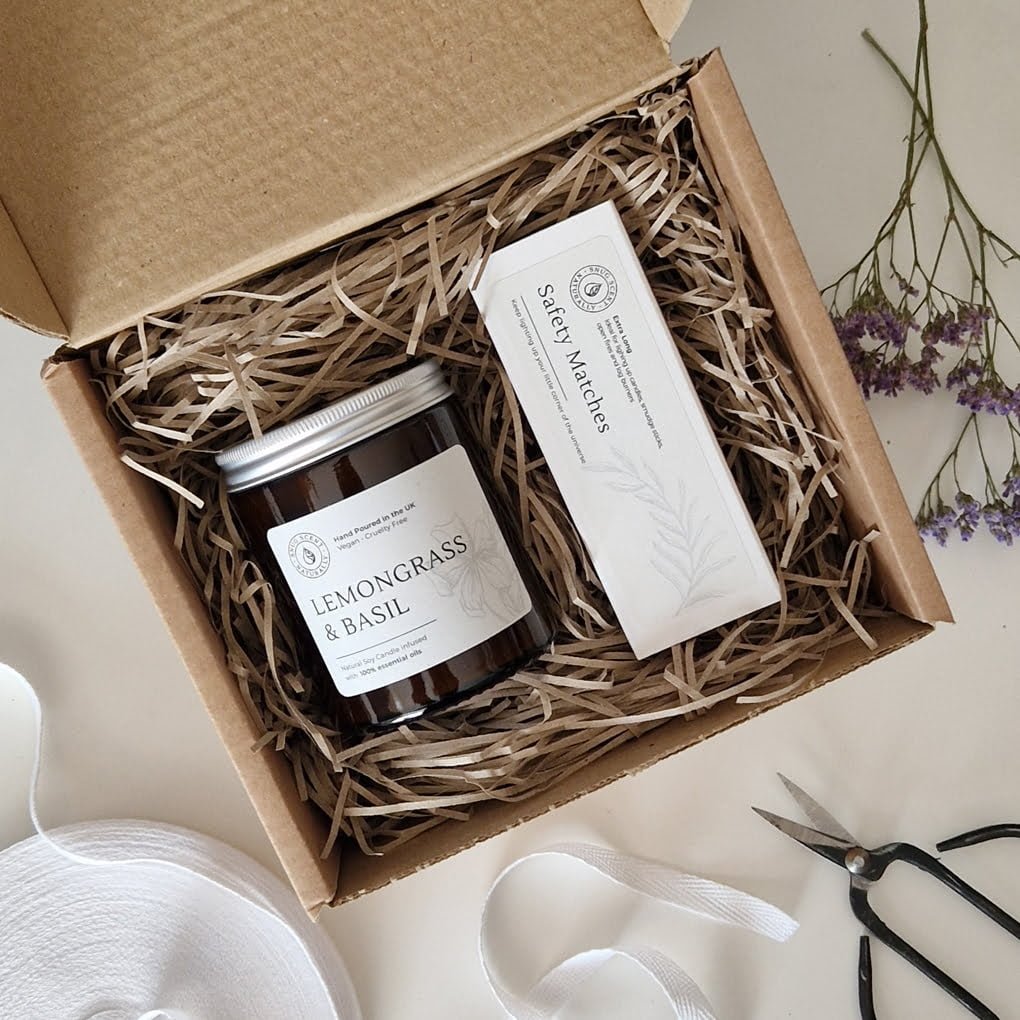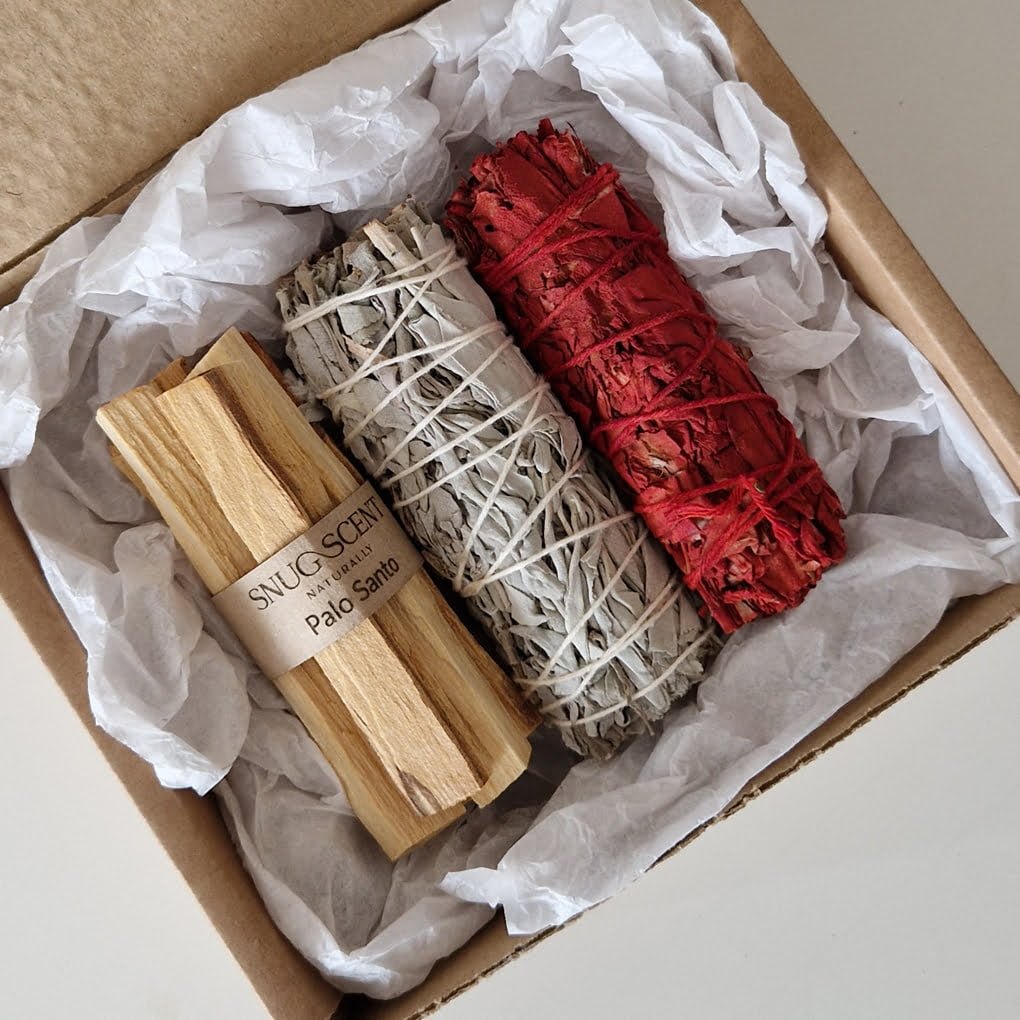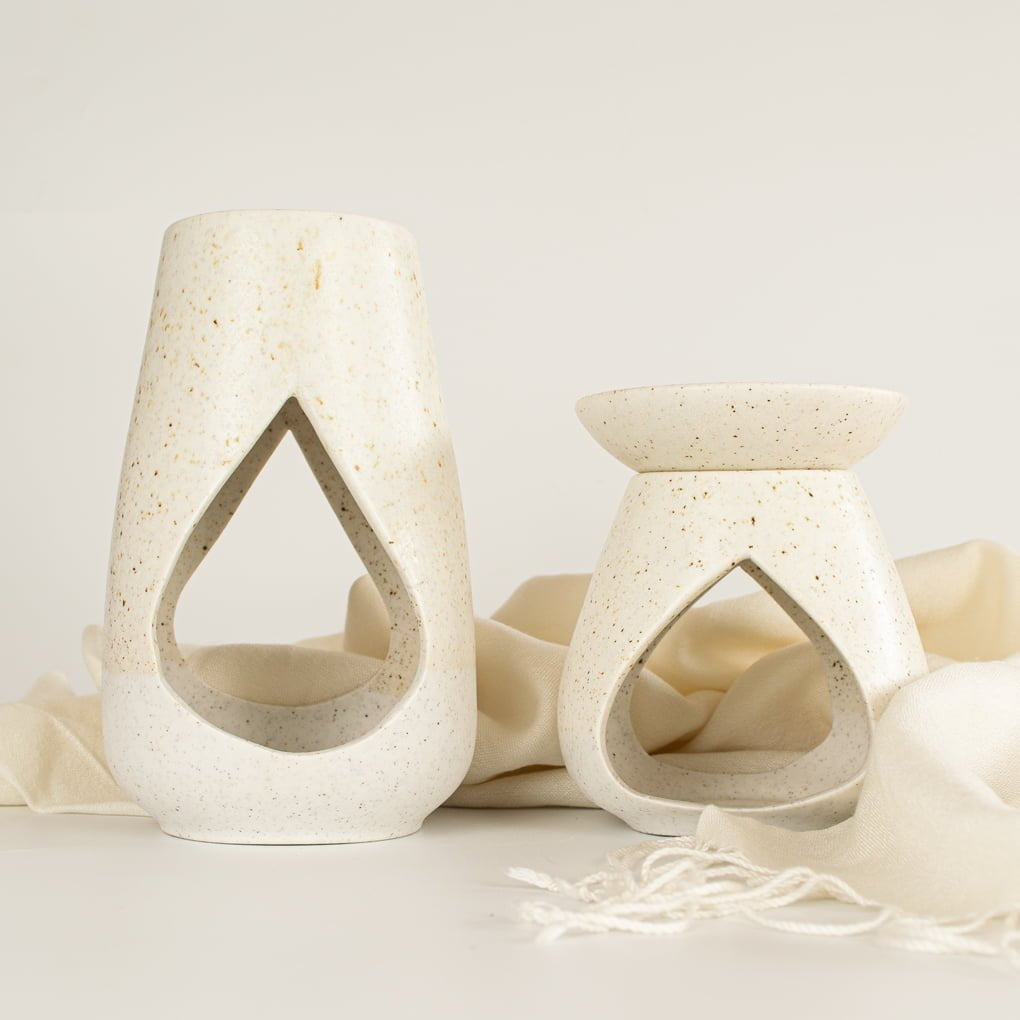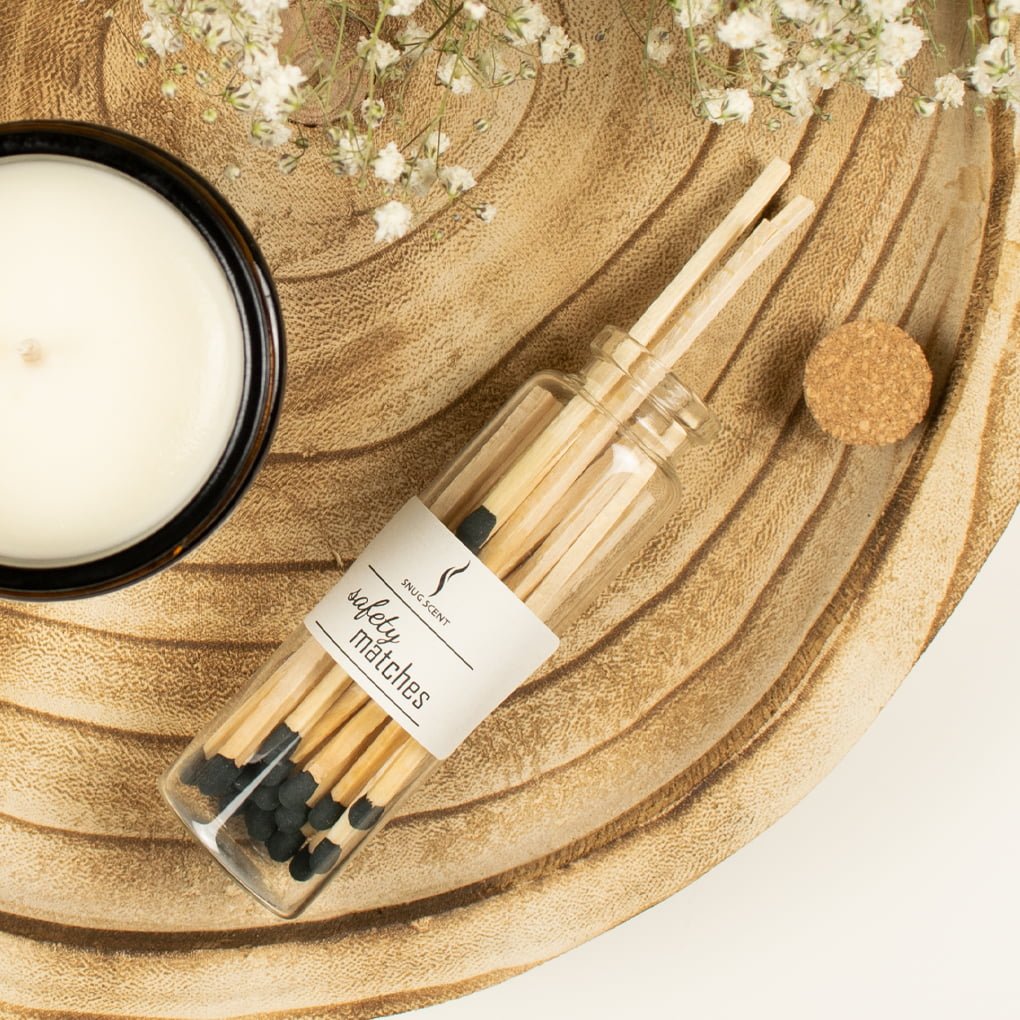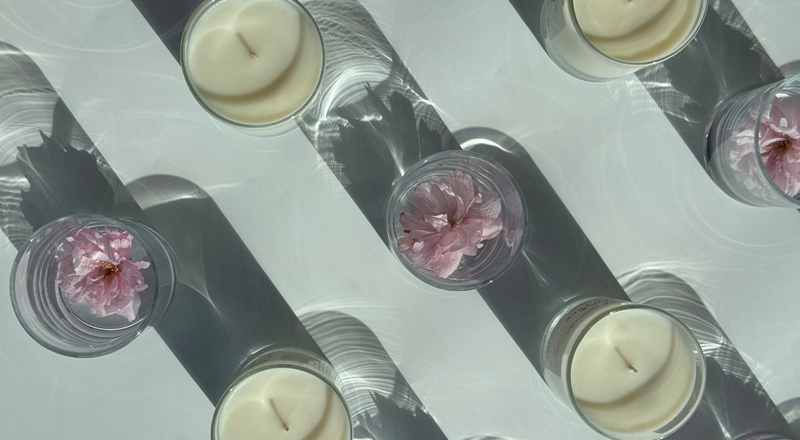About Candles
Different Types of Candles: A Complete Guide To Candle Classification
Candles have illuminated our homes for centuries, evolving from mere light sources to essential elements of home decor, aromatherapy, and self-care rituals. Their popularity continues to grow, thanks to their ability to add a cosy ambience and a personal touch to any space. Understanding the different types of candles can help you choose the right one for enhancing your environment or giving as a thoughtful gift.
Candle Composition
Candles are made from a variety of materials, each offering unique characteristics and benefits for different uses. The choice of wax can affect everything from the candle’s burn time to its environmental impact.
Paraffin Candles
Paraffin wax is a staple in the candle-making industry, praised for its exceptional ability to hold scents and its affordability. Originating from the distillation of petroleum, this type of wax is highly favoured for its adaptability in various candle designs and colours. Its versatility makes it an ideal choice for everything from simple tea lights to elaborate, multi-coloured pillar candles.
Despite its widespread use, paraffin wax does have its drawbacks, particularly concerning health and environmental impact. When burned, paraffin candles can release a mix of chemicals including toluene and benzene, which are known carcinogens. These emissions can degrade indoor air quality and pose a health risk, especially in poorly ventilated spaces.
Moreover, the production of paraffin wax is not sustainable, as it relies on non-renewable petroleum resources, which contributes to the depletion of fossil fuels. For consumers looking to reduce their environmental footprint, this might be a significant concern.
Additionally, frequent use of paraffin candles can lead to the buildup of soot in the home. This black residue can stain walls and ceilings and requires regular cleaning to manage. For those with allergies, asthma, or other respiratory conditions, the particles released from burning paraffin wax can exacerbate symptoms, making it important to consider alternative candle materials for a healthier living environment.
Vegetable Candles
Vegetable candles, crafted from natural vegetable-based waxes such as soy, palm, or rapeseed, are highly regarded for their eco-friendly properties and sustainability. These candles are a popular choice for environmentally conscious consumers who prefer products that have a minimal impact on the planet. The waxes used in these candles are derived from renewable resources, which means they do not deplete finite resources the way paraffin wax does.
The production of vegetable candles often involves less energy and results in fewer carbon emissions compared to the manufacture of paraffin candles. Additionally, since these waxes are biodegradable, they contribute less waste to landfills. The natural origin of vegetable waxes also means that they are free from the toxins and pollutants associated with petroleum-based products, offering a cleaner and healthier option for indoor air quality.
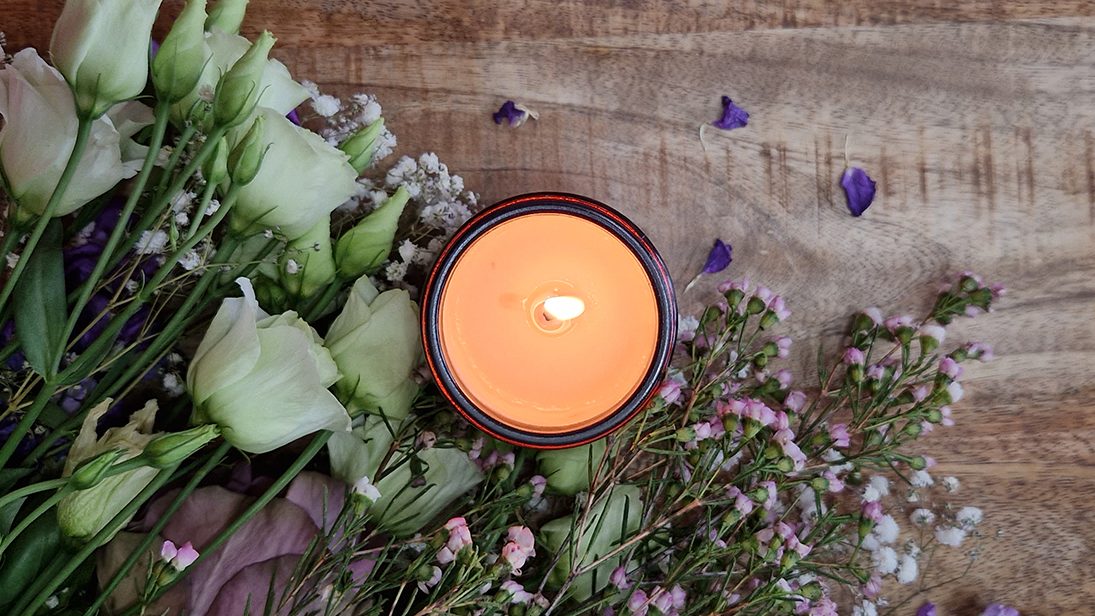
Soy Candles
Soy candles, made from soybean oil, stand out in the candle market for their environmental and health benefits. As a natural, renewable resource, soy wax is derived from soybeans, a widely cultivated crop. This makes soy candles a more sustainable choice than those made from paraffin, which is based on the limited resource of petroleum. The process of refining soy oil into wax has a lower environmental impact, producing fewer carbon emissions and requiring less energy compared to the extraction and processing of paraffin.
One of the key advantages of soy candles is their clean burning quality. They do not emit toxins, carcinogens, or pollutants, thereby minimizing the risk of compromising indoor air quality. This makes soy candles particularly appealing to health-conscious consumers or those with respiratory issues, as they are less likely to aggravate allergies or asthma. The absence of petrol-carbon soot that you often find with paraffin candles also means they are cleaner; they do not leave black soot marks on walls or ceilings.
Soy candles are also celebrated for their long burn time. Soy wax burns at a cooler temperature than paraffin wax, meaning that soy candles typically last longer than comparable paraffin ones. This slow-burning process allows the candles to distribute fragrance gradually and evenly, creating a more pleasant aroma that is not overwhelming. The gentle release of scent makes soy candles ideal for use with natural essential oils, enhancing the therapeutic properties of aromatherapy candles without the scent being too intense or artificial.
Moreover, soy candles have a beautiful, smooth appearance that makes them aesthetically pleasing and suitable for a variety of decors. They are often used in containers because soy wax tends to be softer than other types of candle wax, which also makes them versatile for blending with colour and fragrance.
Other Vegetable Waxes
In addition to soy, the candle market offers other types of vegetable waxes such as palm and rapeseed wax, each with its unique properties and advantages. Palm wax is known for its excellent scent-throw and its ability to form beautiful crystalline patterns on the surface of the candles, which adds a decorative touch. It burns clean and efficiently, producing minimal soot, which makes it attractive to those seeking a more environmentally responsible option.
Rapeseed wax, derived from the oil-rich seeds of the rapeseed plant, is another sustainable choice. It is particularly popular in Europe, where it is grown extensively and used to create candles that burn cleanly and last longer than many other waxes. Rapeseed wax is also non-toxic and biodegradable, making it a great alternative for those looking to reduce their ecological impact.
These vegetable waxes support sustainable agriculture by providing farmers with a profitable use for their crops while promoting crop rotation and biodiversity. For consumers focused on minimizing their environmental footprint, candles made from these waxes offer a responsible and high-quality option.
Beeswax Candles
Beeswax candles are a premium choice among candle enthusiasts due to their natural composition and multiple benefits. Sourced directly from the honeycombs of bees, beeswax has a distinctive, naturally sweet scent that comes from the honey and floral nectar in the honeycomb, making these candles wonderfully fragrant without the addition of artificial scents. This natural fragrance adds a gentle, comforting aroma to any room.
When it comes to burning, beeswax candles are superior. They burn with a bright, steady flame and produce very little smoke, making them cleaner than most other types of candles. This clean-burning is especially beneficial for maintaining indoor air quality, as beeswax candles do not release harmful byproducts or soot. Additionally, as they burn, beeswax candles emit negative ions that help purify the air by neutralizing positive ions such as dust, pollen, and pollutants, thereby reducing allergens and enhancing the overall air quality.
Despite their higher cost, the long burn time of beeswax candles makes them a cost-effective choice in the long run. They burn slower than other waxes, providing prolonged enjoyment and a consistent release of their delightful natural scent. Furthermore, beeswax is a renewable resource that aligns with environmentally friendly practices and appeals to those seeking sustainable products.
The health benefits, coupled with the environmental advantages and the unique charm of their natural scent, make beeswax candles a worthwhile investment for those looking to enhance their living spaces with warmth, light, and a touch of nature’s sweetness.
Gel Candles
Gel candles are distinctive for their transparent gel made from a combination of mineral oil and polymer resin, which gives them their unique, jelly-like consistency. This clear gel allows for creative designs, such as suspending decorative elements like vibrant flowers, colourful shells, or intricate stones within the candle itself, making each one a unique piece of art. These visually striking candles are particularly favoured for their aesthetic appeal and ability to enhance the decor of any room.
However, due to their composition, gel candles must be handled with care. They tend to burn hotter than wax candles, which can increase the risk of the container breaking if not monitored properly. It’s important to place them on a heat-resistant surface away from drafts and never leave them unattended while lit. With proper care, gel candles can provide a beautiful and safe addition to your home’s ambience.
Natural Candles
Opting for natural candles means choosing products crafted from ingredients that undergo minimal chemical processing. This approach not only supports better health by reducing exposure to harmful chemicals but also benefits the environment by minimizing ecological damage. Natural candles often use sustainable resources, enhancing their appeal to eco-conscious consumers.
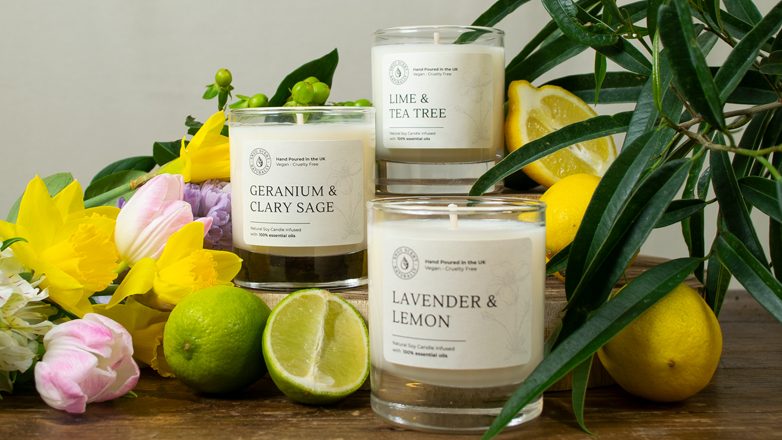
Botanical Candles
Botanical candles, synonymous with natural candles, strictly adhere to formulations that use only ingredients sourced from nature. This distinction is crucial, as it ensures that no synthetic additives taint the purity of the product. The term “botanical” in the context of candles implies an authenticity that is deeply rooted in environmental and health-conscious practices. These candles are crafted from natural waxes like soy or beeswax, scented with essential oils extracted from plants, and may include pieces of dried herbs or flowers to enhance their aesthetic appeal and fragrance.
The use of genuine botanical components not only provides a cleaner burn but also infuses spaces with a subtle, natural aroma that can enhance the overall atmosphere without overwhelming the senses. For instance, a botanical candle with embedded lavender flowers and scented with lavender essential oil offers a soothing experience that aids relaxation and stress relief.
Organic Candles
Organic candles are made from certified organic materials such as wax and essential oils, meaning they are grown without synthetic fertilizers or pesticides. This ensures that their production process is environmentally friendly and sustainable, aligning with green practices that support soil health and biodiversity. Organic candles appeal especially to those who prioritize ecological and personal health, as they burn without releasing toxins associated with conventional agricultural chemicals.
While the benefits of organic candles are clear, their rarity and higher production costs make them less common. The stringent standards required for organic certification can significantly increase the price of these candles, making them a premium choice. Nonetheless, for those willing to invest in higher-quality, environmentally responsible products, organic candles offer a superior experience that supports both personal well-being and the planet.
It’s important for consumers to recognise that genuine botanical candles do not contain any synthetic ingredients. The market can sometimes mislead with terms like ‘natural fragrance,’ which may not always denote a purely natural origin. Therefore, transparency in labelling and ingredient sourcing is critical. When botanical candles are made authentically, they represent a commitment to sustainability and wellness, free from the risks of greenwashing.
Scented Candles
Scented candles are powerful tools for setting a mood or enhancing an atmosphere, whether you’re aiming to relax after a long day, energize a workspace, or create a warm, welcoming ambience for guests. Available in an array of fragrances, from soothing lavender to invigorating citrus, they can significantly influence the feel of any space, making it more pleasant and inviting.

Essential Oil Candles
Essential oil candles harness the natural aromas and therapeutic properties of plant extracts, offering a pure and health-enhancing experience. Unlike candles scented with synthetic fragrances, essential oil candles emit a more subtle yet deeply aromatic scent that can therapeutically influence the mind and body. Essential oils such as lavender are renowned for their calming effects, which can aid in reducing stress and promoting restful sleep. On the other hand, oils like peppermint and eucalyptus are known to invigorate the senses and can help to enhance concentration and alleviate mental fatigue.
These candles provide a holistic approach to well-being, creating an environment that not only smells good but also contributes to emotional and physical health. The natural components in these candles make them a preferred choice for those who are health-conscious or have sensitivities to artificial scents. Burning essential oil candles can transform an ordinary room into a soothing sanctuary or a revitalizing retreat, depending on the blend of oils used. Whether used for meditation, relaxation, or simply to add a pleasant aroma to your home, essential oil candles offer a natural, effective way to enrich your living space and well-being.
Aromatherapy Candles
Aromatherapy candles are crafted with the purpose of enhancing both psychological and physical well-being through the power of scent. These candles utilize specific essential oils that are selected for their therapeutic properties, enabling you to influence your mood and health in a positive way. For instance, lavender is widely recognized for its ability to soothe nerves and promote a sense of calm, making it ideal for relaxation and stress reduction. Peppermint, on the other hand, is celebrated for its invigorating qualities that can boost energy and enhance mental clarity.
Using these candles in your daily routine can help establish a healing atmosphere in your home or workplace. For example, burning a candle with eucalyptus during the cold season can help clear nasal passages and support respiratory health. Similarly, a candle with rosemary might be used to improve focus and concentration during work or study.
Aromatherapy candles offer a convenient and effective way to access the benefits of essential oils. They can be used to create a therapeutic environment that supports specific health and mood goals, such as reducing anxiety, enhancing sleep quality, or increasing energy levels. Whether used for meditation, during yoga practice, or simply to enrich your living space, these candles provide a multisensory experience that promotes overall well-being.

Synthetic Fragrance Candles
Synthetic fragrance candles are crafted using man-made compounds designed to emulate a diverse array of scents, enabling manufacturers to offer consumers virtually any fragrance imaginable. From the clean, crisp aroma of fresh linen to the rich and sultry notes of exotic spices, these candles can provide an intense sensory experience that natural scents might not be able to fully replicate. This versatility makes synthetic fragrance candles exceptionally popular among consumers who have specific scent preferences or are looking to match a particular theme or season.
The technology behind synthetic fragrances allows for consistent scent quality and intensity throughout the candle’s life. These scents can be engineered to remain stable over time and to release gradually, maintaining their potency and providing a long-lasting aroma. For instance, a candle designed to mimic the smell of a beach can transport you to a seaside escape right in your living room, offering a sense of relaxation and escapism.
Moreover, synthetic fragrance candles are often more affordable than their natural counterparts, making them accessible to a wider audience. They are ideal for use in large spaces where a stronger scent throw is needed to fill the area effectively. Whether used for personal enjoyment or creating an inviting atmosphere for guests, synthetic fragrance candles add a touch of luxury and comfort to any setting.
Specialty Candles
Speciality candles are tailored to meet specific preferences or requirements, offering a wide range of options from intricately designed aesthetic pieces to hypoallergenic varieties that cater to those with allergies. These candles can also include ethical choices like vegan or fair-trade certified products, appealing to consumers who prioritize ethical considerations in their purchasing decisions.
Vegan Candles
Vegan candles are designed to align with cruelty-free and ethical consumption standards, ensuring that no animal-derived products are used in their creation. This makes them particularly appealing to individuals who are dedicated to animal welfare and seek to minimize their environmental impact. Commonly made from plant-based waxes like soy, palm, or coconut, these candles avoid the use of beeswax, which is a common ingredient in non-vegan candles. Instead, they incorporate natural essential oils for fragrance, providing a pleasant aroma without the use of synthetic scents, which can sometimes be tested on animals. Vegan candles represent a conscientious choice for those who are not only looking to enhance their home ambience but also commit to a lifestyle that respects animal rights and promotes sustainability.
Unscented Candles
Unscented candles are a practical choice for those who seek the ambience and illumination of candles without any added fragrance. This lack of scent makes them particularly suitable for dining environments, where the natural aromas of food should take precedence without being overpowered by fragranced candles. They are also a thoughtful option for settings such as offices or healthcare facilities, where individuals may be sensitive to smells or have allergies that can be triggered by perfumed products. Furthermore, unscented candles are ideal for creating a subtle, visually calming atmosphere without the distraction of different scents, allowing the natural beauty and warmth of the candlelight to stand out. For those with respiratory issues or chemical sensitivities, unscented candles offer a clean, minimalistic option that enhances the environment without causing discomfort.
Candles have a unique ability to transform the atmosphere of any home, providing both aesthetic appeal and functional benefits. The soft glow of candlelight can instantly make a space feel warmer and more welcoming, creating a tranquil or romantic ambience depending on the setting. Additionally, candles come in various shapes, sizes, and colours, allowing them to serve as decorative elements that complement the interior design of a room.
By understanding the different types of candles – such as paraffin, soy, beeswax, and gel – you can choose options that align with your personal health considerations, ethical beliefs, and environmental concerns. For example, opting for beeswax or soy candles offers a cleaner burn and less environmental impact than traditional paraffin options. Making informed decisions about the candles you choose not only enhances your living space but also supports your lifestyle and values, contributing to a more personalized and conscious home environment.
